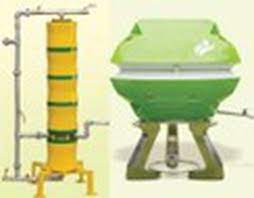
AMRIT Technology

15.12.2023
AMRIT Technology , Daily Current Affairs , RACE IAS : Best IAS Ccoaching in Lucknow
|
For Prelims: About Amrit Technology,Key points about Arsenic,Properties,Uses Of Arsenic For Mains Paper:Jal Jeevan Mission,Objectives |
Why in the news?
Recently, the Indian Institute of Technology, Madras has developed a technology called ‘AMRIT’ (Arsenic and Metal Removal by Indian Technology) technology.
About Amrit Technology:
- It is developed for the removal of Arsenic and Metal ions from water.
- The technology uses nano-scale iron oxy-hydroxide, which selectively removes arsenic when water is passed through it.
- This water purifier has been developed for both domestic as well as community levels.
- The technology has been recommended by the erstwhile ‘Standing Committee’ of the Department of Drinking Water and Sanitation for the examination of the best technologies concerning water and sanitation.
- It is aligned with the Jal Jeevan Mission.
Key points about Arsenic:
- It is a natural component of the earth’s crust and is widely distributed throughout the environment in the air, water and land.
- It is highly toxic in its inorganic form.
Properties:
- In its most stable elemental state, arsenic is a steel-grey, brittle solid with low thermal and electrical conductivity.
- Although some forms of elemental arsenic are metal-like, the element is best classified as a nonmetal.
- It has been recognized as a toxic element and is considered a human health hazard.
- Long-term intake of arsenic contaminated water leads to arsenic poisoning or arsenicosis, with cancer of skin, bladder, kidney or lung or diseases of skin.
- World Health Organisation’s provisional guideline value for arsenic in drinking water - 0.01 mg/l (10 μg/l).
- Permissible limit of arsenic in India in absence of an alternative source - 0.05 mg/l (50 μg/l).
Uses Of Arsenic
- This element is mainly used in compounds and a smaller amount is used in alloys.
- It was also used to prepare lead shot in the past and the amount used in these applications continues to decrease.
- Arsenic can easily get into the environment from such applications. Some amount is added to silicon and germanium to make transistors.
- Gallium arsenide, a compound of arsenic, is used to make light-emitting diodes (LEDs).
- These LEDs produce the lighted numbers in the clock, watches, hand-held calculators and different other electronic devices.
Jal Jeevan Mission
- It is an initiative taken under the Jal Shakti Ministry also known as Department of Drinking Water and Sanitation (DDWS) to provide every house with piped water and help them with proper sanitation and drinking water.
- It was first hinted at on Independence Day in 2019 when Narendra Modi in his speech said that most houses in India do not have proper access to safe drinking water.
- It is envisioned to provide safe and adequate drinking water through individual household tap connections by 2024 to all households in rural India.
- It envisages supply of 55 litres of water per person per day to every rural household through Functional Household Tap Connections (FHTC) by 2024.
- It also includes functional tap connection to Schools, Anganwadi centres, GP buildings, Health centres, wellness centres and community buildings.
- The programme will also implement source sustainability measures as mandatory elements, such as recharge and reuse through grey water management, water conservation, rain water harvesting.
- JJM focuses on integrated demand and supply-side management of water at the local level.
Objectives
- To supply FHTC (Functional Tap Connection) to every household in a rural area.
- To prioritize the terms of FHTCs in quality affected areas, villages in drought-prone and desert areas, Sansad Adarsh Gram Yojana (SAGY) villages, etc.
- To supply functional tap connections FHTCs to colleges, Anganwadi centres, Gram Panchayat buildings, health centres, wellness centres, and community buildings.
- To watch the functionality of tap connections.
- To market and ensure voluntary ownership among area people through contribution in cash, kind and/ or labour, and voluntary labour (shramdaan).
- To help in ensuring the sustainability of the water system, i.e., water source, water system infrastructure, and funds for normal O&M
- To help bring awareness on several aspects and significance of safe beverages and stakeholders' involvement in a manner that makes everyone's business.
Source:The hindu